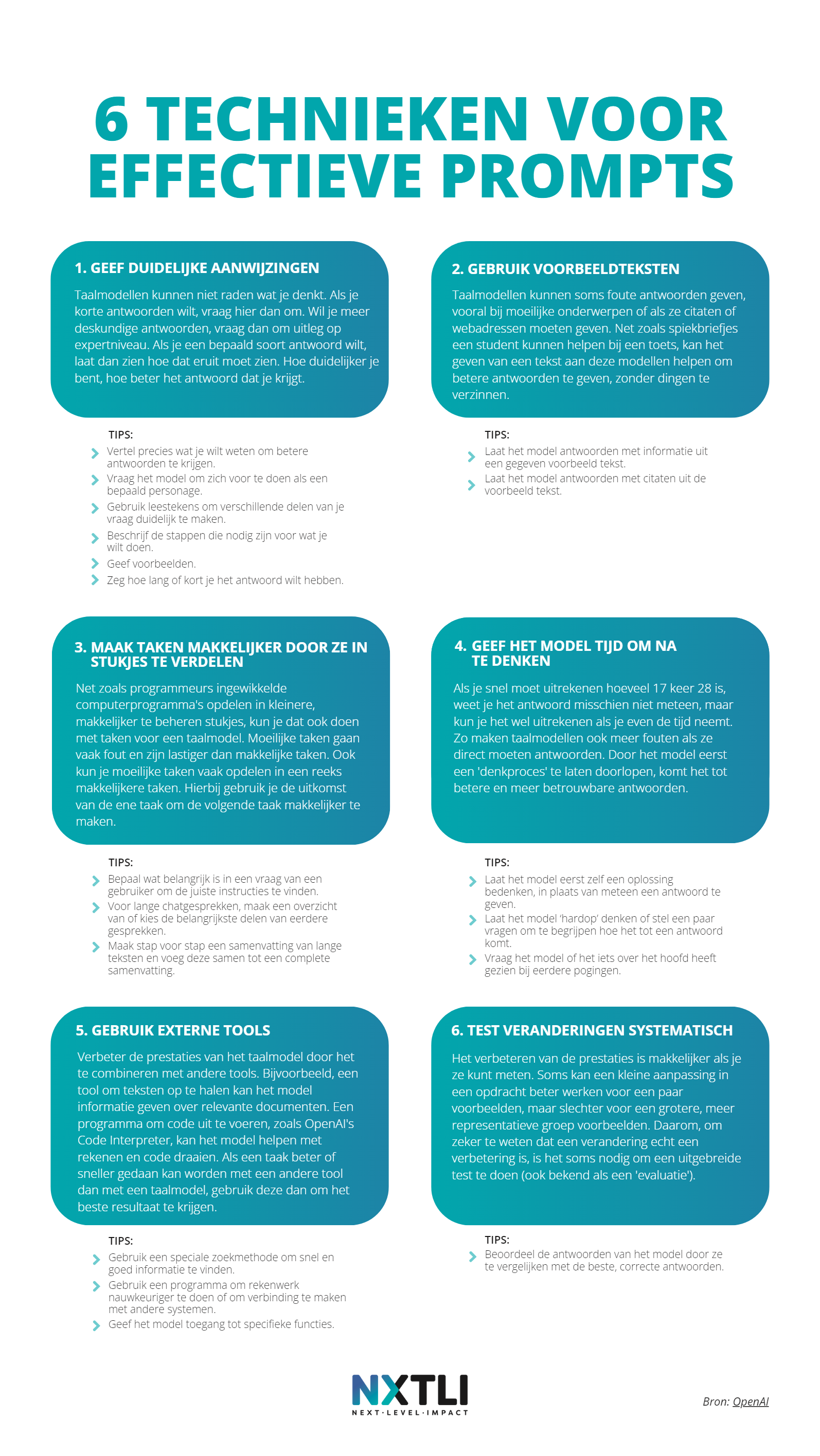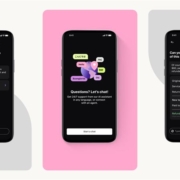Apply these 6 effective prompts techniques for better AI results
The expression "garbage in, garbage out" also applies to the use of AI. If you give AI tools incomplete or unclear input, you cannot expect high-quality output. To improve the quality of AI results, it is important to give clear and precise instructions. Sometimes you have to treat AI like a child to whom you have to explain something step by step so that it understands exactly what you mean.
You can apply the 6 techniques below to give better instructions, which will lead to better AI results.

1. Give clear directions
Language models cannot guess what you are thinking. If you want short answers, ask for these. If you want more expert answers, ask for expert-level explanations. If you want a certain type of answer, show what it should look like. The clearer you are, the better the answer you will get.
Tips:
- Tell exactly what you want to know to get better answers.
- Ask the model to impersonate a particular character.
- Use punctuation to make different parts of your question clear.
- Describe the steps required for what you want to do.
- Give examples.
- Say how long or short you want the answer to be.
Below you can see some examples.
| Too limited | Better |
| How do I add numbers in Excel? | How do I add up a row of euro amounts in Excel? I want to do this automatically for an entire sheet of rows, with all totals ending on the right side in a column called "Total." |
| Who is the president? | Who was Mexico's president in 2021, and how often are elections held? |
| Write code to calculate the Fibonacci sequence. | Write a TypeScript function to efficiently compute the Fibonacci sequence. Comment the code in detail to explain what each piece does and why it is written that way. |
| Summarize meeting minutes. | Summarize the minutes of the discussion in one paragraph. Then, for each speaker, describe their main points. Finally, list the next steps or possible action items suggested by the speakers. |
2. Use sample texts
Language models can sometimes give wrong answers, especially on difficult topics or when they have to give quotes or Web addresses. Just as cheat sheets can help a student on a test, giving these models a text can help them give better answers without making things up.
Tips:
- Have the model answer with information from a given sample text.
- Have the model respond with quotes from the sample text.
3. Make difficult tasks easier by breaking them into smaller pieces
Just as programmers break down complicated computer programs into smaller, easier-to-manage pieces, you can do the same with tasks for a language model. Difficult tasks often go wrong and are more difficult than easy tasks. Also, you can often divide difficult tasks into a series of easier tasks. Here you use the outcome of one task to make the next task easier.
Tips:
- Determine what is important in a user's question to find the appropriate instructions.
- For long chat conversations, list or choose the most important parts of previous conversations.
- Make step-by-step summaries of long texts and merge them into a complete summary.
4. Give the model time to think
If you need to quickly calculate how much 17 times 28 is, you may not know the answer right away, but you can figure it out if you take a moment. Similarly, language models make more mistakes if they have to answer immediately. By putting the model through a "thinking process" first, it arrives at better and more reliable answers.
Tips:
- Let the model come up with its own solution first, rather than immediately giving an answer.
- Have the model think "out loud" or ask a few questions to understand how it arrives at an answer.
- Ask the model if it has overlooked anything in previous attempts.
5. Use external tools
Improve the performance of the language model by combining it with other tools. For example, a text retrieval tool can give the model information about relevant documents. A program to execute code, such as OpenAI's Code Interpreter, can help the model compute and run code. If a task can be done better or faster with a tool other than a language model, use it to get the best result.
Tips:
- Use a special search method to find information quickly and properly.
- Use a program to do calculations more accurately or to connect to other systems.
- Give the model access to specific functions.
6. Test changes systematically
Improving performance is easier if you can measure it. Sometimes a small change in a task may work better for a few examples, but worse for a larger, more representative group of examples. Therefore, to be sure that a change really is an improvement, it is sometimes necessary to do a comprehensive test (also known as an "evaluation").
Tip:
- Evaluate the model's answers by comparing them with the best, correct answers.
The above techniques come from the OpenAI "Prompt engineering guide. Check out this guide if you want to dive into this in more detail.
Extra: Create custom instructions in ChatGPT
ChatGPT offers the ability to enter your own instructions and background information about yourself in the "Settings," which contributes to better results.
Click on the '...' by your profile, then choose 'Custom instructions' ('Custom instructions'). Activate this option, and enter information about yourself at the top. Below that, give instructions on how you want ChatGPT to respond. For example, you can specify that you want 'informal text', 'replies in Dutch', and 'detailed replies'.
Take a leap forward in your marketing AI transformation every week
Every Friday, we bring you the latest insights, news and real-world examples on the impact of AI in the marketing world. Whether you want to improve your marketing efficiency, increase customer engagement, sharpen your marketing strategy or digitally transform your business, "Marketing AI Friday" is your weekly guide.
Sign up for Marketing AI Friday for free.










